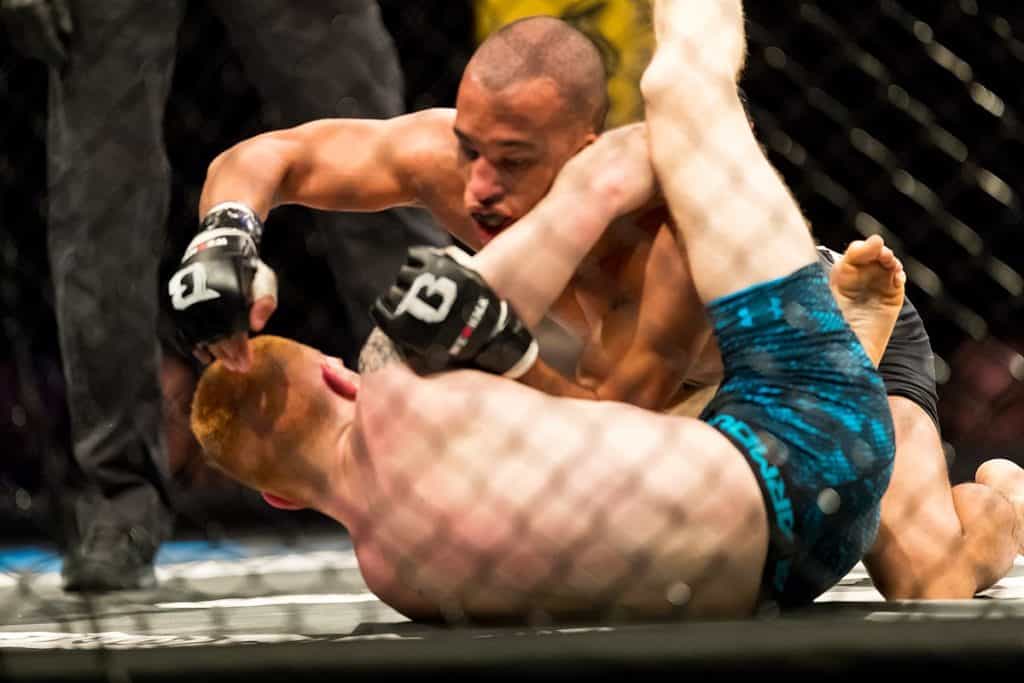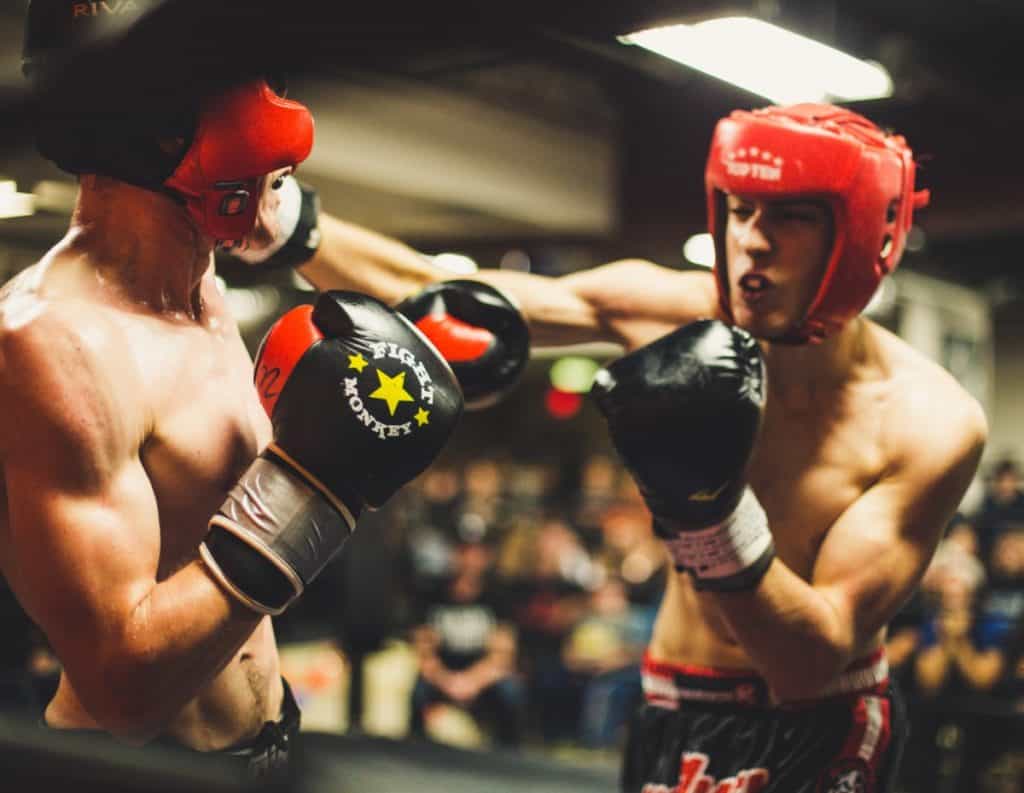If you’re asking yourself this question you’re probably to decide which type of gym to join. You want to know what you’re in for by deciding either path and you want to. I get it, I felt the same way when I was deciding which style to learn too. Both boxing and MMA are tough sports, especially for beginners. But which one is harder to become a proficient fighter in?
While boxing is by no means easy to learn, it is a narrower style of fighting than MMA. Boxing specializes in While boxing is by no means easy to learn, it is a narrower style of fighting than MMA specializing in only punching while standing. Whereas MMA incorporates standing, kneeling, and ground techniques including strikes, grappling, and throws, For most fighters, this range of skills makes MMA much harder to learn than boxing.
And just in case I haven’t made my boxing readers angry enough already, keep reading to see why else I think MMA is a tougher fighting style.
Variety of Combat

Both sports have a lot in common that makes them particularly tough to learn. Each fighter needs to learn defense, footwork, evasion, feints, etc. But the most obvious difference that makes MMA harder than boxing is in the variety of combat skills required. Where a boxer needs only learn how to strike with his hands, an MMA fighter needs to learn punching, throwing, grappling, ground game, elbows, knees, etc. And, because a fighter knows that during a fight he will be standing, kneeling, on his back, on his belly, etc. he’s still useless in the ring if he hasn’t learned how to employ each of these techniques from a variety of ranges, positions, and transitions.
The reasons for this are simple and are born out of the rules each sport developed. Boxing matured after the Marquess of Queensberry Rules were adopted. These rules dictated (amongst other things) that if a fighter falls down the fight stops, if the fighters get into a clinch, the fight stops, and no fighter may strike with his feet or knees. This will narrow a fighter’s skill set, making him exceptionally dangerous at what he does, but also reducing the variety of combat skills he must learn.
Psychological & Physical Challenges
One under acknowledged difference between boxing and MMA is that MMA fighters have to endure being a “white belt” many times over as they learn each of the different skills outlined in the above section. He might be a 3rd Dan black belt in Karate, but when he starts to learn ground game, he is busted down to a white belt and has to learn the most basic of skills right along side the kids in his gym. And once he gets proficient in his ground game, he’ll need to add in some Muay Thai for elbows and knees. Bam! White belt again. An MMA fighter must repeat this ego-crushing cycle a dozen times before he is at all ready to step into an octagon. Many martial artists can’t subjugate their ego in this way and they remain in their one style for their entire career.

Another psychological aspect of MMA training is dealing with claustrophobia. To the uninitiated that might sound strange, especially since gyms are usually hundreds or thousands of square feet in size. But the claustrophobia I’m talking about is when your opponent has you on your back and he’s laying his body weight into you. This is a technique called applying “pressure”. It can restrict the bottom fighters access to air, at minimum, distracting him from effectively escaping his disadvantaged position. For some fighters this is particularly difficult to overcome and can trigger a claustrophobic panic; and once that happens he’s either lights out or tap out.
The physical conditioning required for MMA is also tougher for two simple reasons: (1) nearly the entire body is a viable target and (2) legs are stronger than arms. This means that an MMA fighter has to learn to deal with face punches, like a boxer, but he also needs to be able to handle powerful kicks to his face too. Along with knees delivered from a clinch. And joint pain from submissions. And low kicks to his inner thighs. And… the list is almost endless.
Boxing Strikes Back

Don’t for a minute think that boxing isn’t something to be reckoned with. True that boxing has become a limited sport due to its long standing rules and traditions. But this has allowed the “sweet science” to specialize to a greater degree than perhaps any other combat sport. Boxing may be narrow, but it is a mile deep. As soon as you think you’ve mastered your jab or uppercut, your coach shows you that you need to learn to do it from another angle. Once you’ve got that, there’s footwork to be improved. After that he’s going to school you on your timing and feints. And while all this is going on, he’s going to be drilling you on your endurance and conditioning. This is because boxing’s rounds are both longer, and more numerous than MMA’s, as Connor McGregor found out when he fought Floyd Mayweather back in 2017.
The bottom line here is that while boxing might not contain quite so many different techniques and ranges, and thus may not be as “broad” as MMA, it has, over the centuries, been explored for every possible advantage and become a far “deeper” sport than most people give it credit for.
Final Round
There is no doubt that boxing has produced some of the baddest MF-ers on planet Earth. And the speed, power, and technique of a skilled boxer is something to be envied and emulated. But where it comes to which style of fighting is harder, the obvious winner is MMA. With so many realms of combat that the mixed martial artist needs to become proficient in order to survive, and so many different types of conditioning required to go the distance in each, it is no wonder that most people consider MMA to be the harder style to learn.
Photo Attributions:
- Photo by Daniel Lloyd Blunk-Fernández on Unsplash
- Sven Mandel, CC BY-SA 4.0 https://creativecommons.org/licenses/by-sa/4.0, via Wikimedia Commons
- Photo by MART PRODUCTION from Pexels
- Photo by Hermes Rivera on Unsplash
